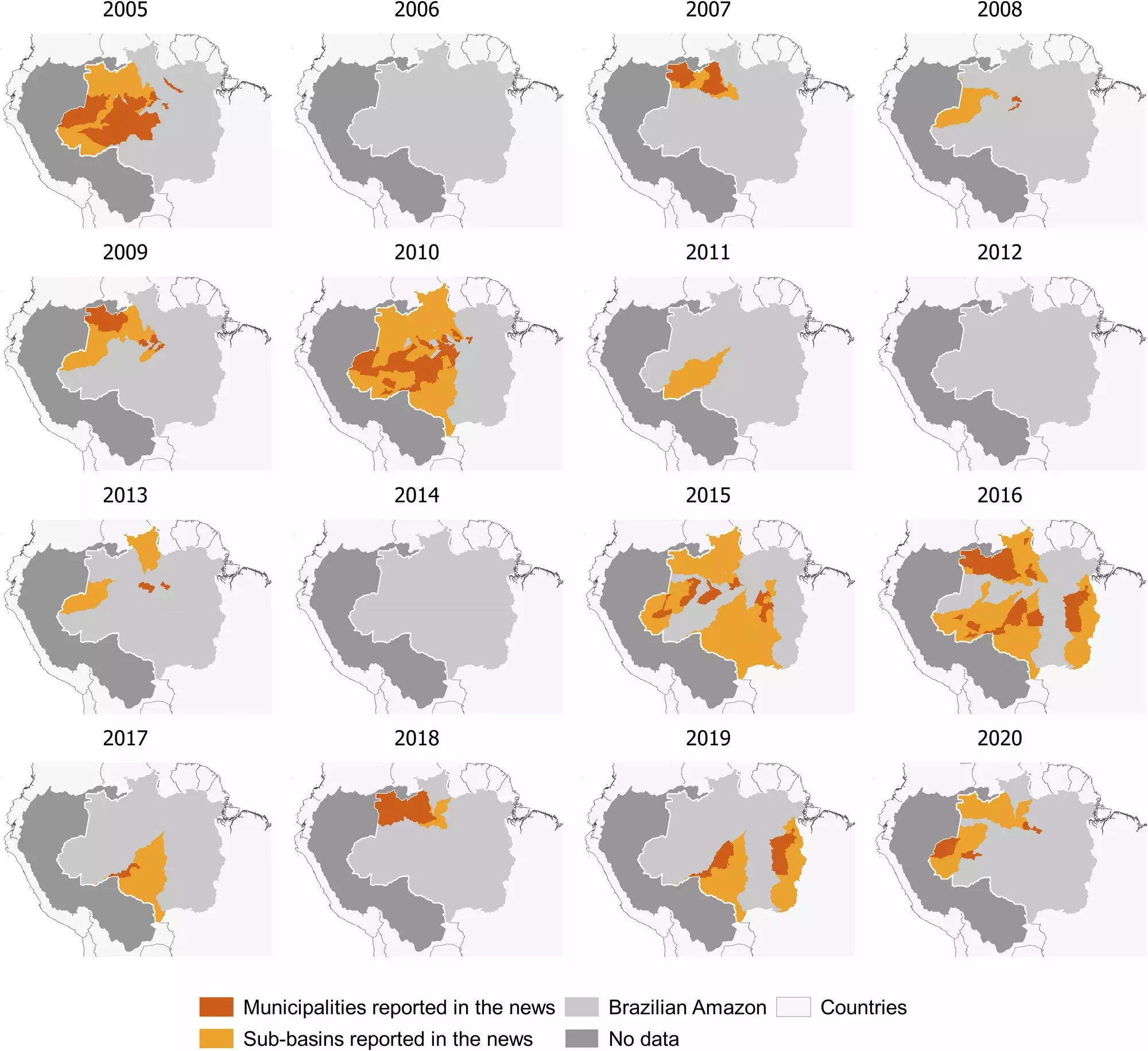The Amazon basin, often referred to as the “lungs of the Earth,” is facing unprecedented challenges due to severe droughts that have persisted for the last two decades. Over this time, periods of low water levels have lengthened significantly—lasting approximately a month longer than historically experienced. This climatic shift is not merely an environmental concern; it has profound implications for the local communities, both Indigenous and non-Indigenous, who rely on the waterways for their livelihoods and cultural practices.
A compelling study from the Institute of Environmental Science and Technology at Universitat Autònoma de Barcelona (ICTA-UAB) emphasizes how the rising frequency and intensity of extreme climatic events are adversely affecting the Amazonian population. Led by Brazilian scientist Letícia Santos de Lima, the research reveals alarming statistics: nearly half of the non-Indigenous communities and over half of the Indigenous villages in Brazil’s Amazon region are likely to face isolation during severe droughts—critical conditions that hamper mobility in a region where rivers serve as the primary mode of transportation.
Water Levels and Mobility: A Dire Link
The profound impact of drought on river levels is striking. Historical data reveal significant drops in water levels during severe drought years, such as 2005, 2010, and 2015-2016, which saw more than 100 days of low water conditions compared to the typical 70 days. This transformation dramatically affects navigability, disrupting access to essential goods, healthcare, and educational opportunities for remote rural communities. These inhabitants depend heavily on inland water transport; when water levels fall too low, the very lifelines that connect them to urban centers and basic necessities wither away.
In a testament to the cascading effects of climate change on societal structures, the research highlights the far-reaching consequences of droughts. The isolation enforced by lower water levels leads to stark scarcity of goods, limiting access to food, healthcare, and other vital services. This predicament forces local populations into a cycle of vulnerability, where restricted access amplifies health crises, educational challenges, and food insecurity.
Rethinking Solutions: Beyond Infrastructure
The study calls for a shift in the paradigm of governmental response. Dr. Santos de Lima urges for proactive strategies rather than reactive measures, advocating for policies rooted in long-term adaptation planning. The authors argue convincingly that constructing more roads is not the answer to the isolation imposed by droughts. Roads often catalyze deforestation, a major driver of the very climate change that aggravates drought conditions. As forests are cleared, changes in rainfall patterns and increased sediment in rivers further deteriorate navigability, exacerbating the issues at hand.
This requires a holistic understanding of the Amazonian ecosystem, recognizing that any intervention must be carefully considered within the context of its broader environmental impacts. The connection between infrastructure development, environmental degradation, and community resilience is complex and necessitates a careful, informed approach tailored to the unique challenges faced by local populations.
The Role of Scientific Collaboration in Action
The interdisciplinary approach employed in the study—incorporating spatial analysis, hydrology, and media content analysis—offers valuable insights into the multifaceted nature of climate change impacts on the Amazonian people. By harmonizing various fields of study, researchers can provide a clearer perspective on how these extreme weather events unfold over time and their societal consequences.
It’s evident that future research must continue to engage with local communities, incorporating their experiences and knowledge into broader environmental and policy discussions. Indigenous wisdom, especially, has much to offer in understanding climate resilience and adaptation strategies that are culturally and contextually appropriate.
As the world watches the effects of climate change unfold in the Amazon basin, it becomes increasingly clear that immediate action is essential. The local populations, particularly Indigenous communities, require support that goes beyond immediate relief, providing them with the resources and frameworks necessary to adapt to an environment that is continually changing. The urgency of addressing these challenges cannot be overstated, as the fate of the Amazon and its people hangs in a delicate balance.

